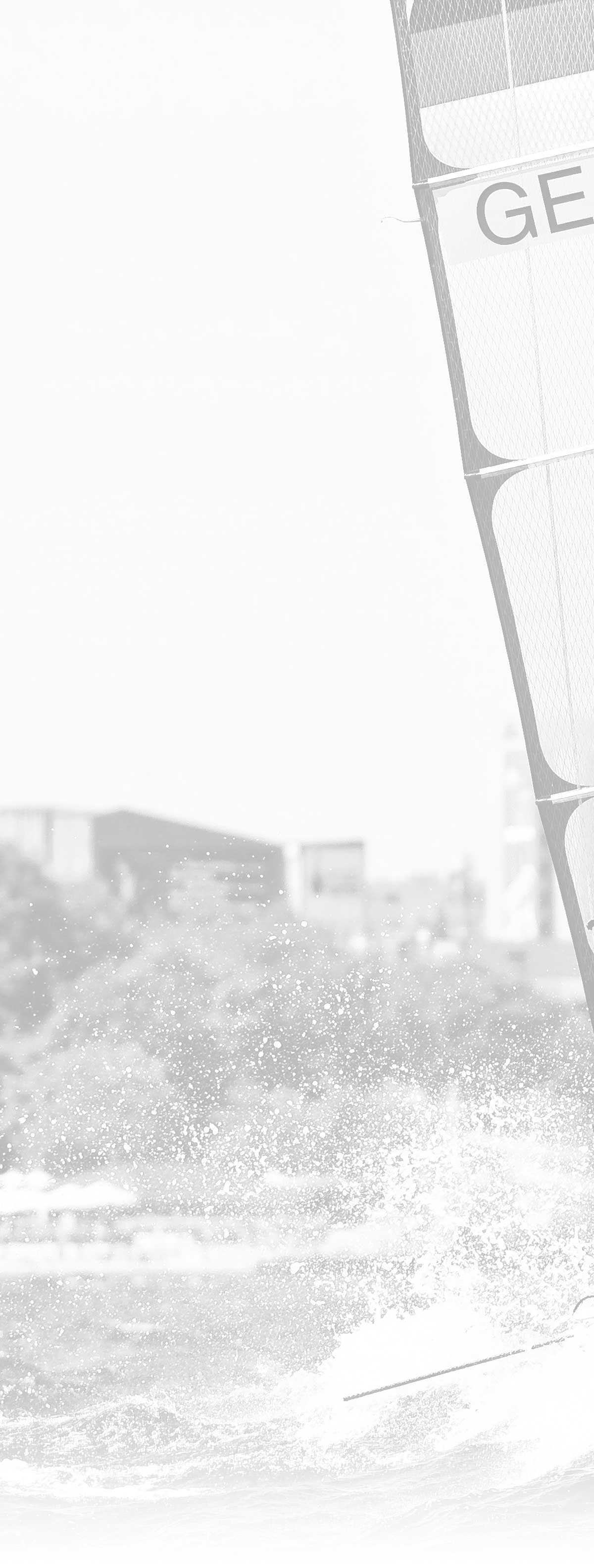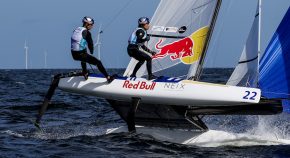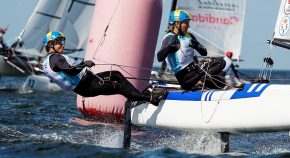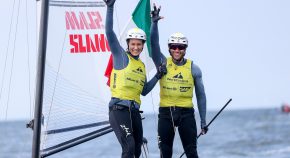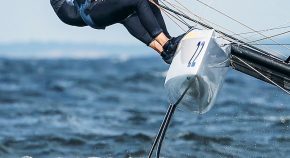Review of Nacra Sailing Facilities in the Netherlands
Nacra 17 Class Manager, Ben Remocker, spent 3 days prior to Hyeres visiting the Nacra facilities in the Netherlands along with Simon Forbes, from the World Sailing technical staff. We were hosted by Peter Vink from Nacra. While no new boats were delivered at that point, it was possible to review all the tooling, beams, storage systems, sail loft, mast factory, and foil factory. The first new boats will depart Thailand shortly and they report the previously released schedule of deliveries is on track.
Before the boats are delivered on June 26th, World Sailing officials and our class measurers will return to the Netherlands to do another review of the assembly system prior to release of the equipment.
The assembly space at Nacra is well designed, clean, and ready to process all the boats in a consistent and logical manner for years to come. The metal pieces of the updated Nacra 17; beams, rudder gudgeons, in-beam reinforcements, etc., all seem to have advanced in design since 2013, with more reinforcement and build systems that are simple and reproducible.
One the first afternoon, we visited Hall spars, in Southern Netherlands. They have a wonderful facility including an impressive autoclave. Most of the masts they build are for 50+ foot sailboats and the autoclave is 42m long, so they can build huge masts in a single shot.
The Autoclave system has several checks built into it to ensure consistent temperatures and pressures are used each time. There is a single tool used for all Nacra 17 masts, so all the masts are built from the same female tooling. Each mast is bend tested with results recorded, and ultimately published.
They showed us the space where the Nacra 17 masts are made and gave a thorough review of their materials plan, vital for long term for consistency. In general, Hall spars seems like a professional and diligent operation that should be able to make of consistent and high quality masts for the foreseeable future.
On the second day of the visit we travelled to Holland Composites, who will be building the centerboards and rudders for the Nacra 17. Holland Composites are best known currently within the sailing world for their DNA branded A-Cats, and were pioneers in 4-point foiling development within the A-cat class. They also build some much larger catamarans, as well as business lines apart from sailing, like architectural features and composite parts for the defense industry.
There are 4 items of tooling for the Nacra 17, a port centerboard, starboard centerboard, port rudder and starboard rudder in operation, so a single piece of tooling for each item a boat requires. These female moulds are accompanied by a checklist of the laminate schedule which uses only carbon pre-preg in various sizes and configurations to make up each foil. 4 foils have been bend tested to destruction to confirm design properties and build properties are aligned with the design. An additional failure mode has recently been added to the requirement, in the typically unloaded direction, and the first batch of centerboards were being built on the day we visited. There had already been a few rudders built.
Each completed part will be weighed and bend tested, and ultimately these figures will be published like the masts. The systems and set up will be able to produce a set of foils each work day, so averaging 4 sets per work week (allowing for holidays and tool maintenance). The production schedule has no room for further delay, but as it stands can achieve the currently published distribution schedule. The team is passionate about composite production and seem capable of delivering high quality and repeatable foils to the fleet for the foreseeable future.
As a note to the above, Holland Composite only produce the rudder vertical, not the elevator itself. The elevators are produced by a machining company which we did not visit, though we were able to view a sample. Each elevators is machined from a solid block of material through a computer controlled system. The parts look fantastic.
In both cases of the foils and elevators, the surface condition of the parts will be left raw, so no paint. This will allow the hardest surface possible for durability, and also will provide the fleet easy transparency around the board park to ensure strict compliance to class rules which do not allow any modification. Measurers are being built verification tooling for each aspect critical to the new boats, which will allow for easy compliance checks with these rules.
Addressing Foil Failure Of This Week
Early this week one of the foils built by Holland Composites broke during the learning sessions. While the sailors didn’t know it at the time, it turns out that this was not a board built to the production specification. It was one of the first boards built by Holland composites and since then, with Peter and M&M, the design has been updated a few times. The production boards design changed to specifically address the types of split that occurred, and the production boards are ‘three times stronger’ than the board that broke, according to Peter Vink. The error here was that the board should have been removed from the testing and a production board put in it’s place, which has now occurred.
The other surprise to some sailors was the plastic bag that came out of the split. This is due using an internal bladder used during the production process. Since the boards are built in ‘one hit’ there is no way to remove the bladder after curing and therefore all boards will include these bladders inside them.
While we don’t know what may happen in the future, we can say that this specific problem has already been addressed before the start of the production run.

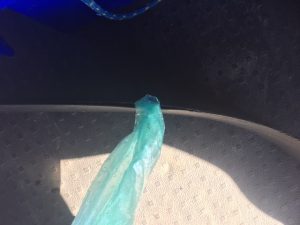
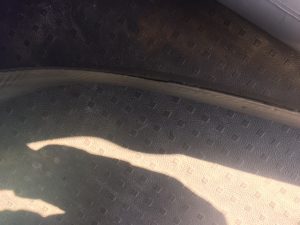
(also, welcome to the new website! If you would like to be included in our mailing list, please sign up.)
